An avid collector of vintage printed fabrics and found embroideries for over 20 years, New York fibre artist Orly Cogan uses hand embroidery to modernize their appearance, altering their original purpose and revolutionizing the story of the women who created them. Seeing herself as a collaborator with these female makers from more modest eras, Orly uses stitch to incorporate into their work the unladylike reality and wit that she sees as more common to the women of today.
Aware of modern stereotypes which, she believes, must be overcome, Orly highlights the differences between the struggles contemporary women face and those of the earlier generation who would have originally embroidered the textiles to “feminize” their homes.
Orly is drawn to the space between – dichotomies such as soft and tough, dirty and clean, fantasy and reality, especially as related to gender. She explores common feminine archetypes and stereotypes, such as Madonna/Whore, Pin-Up Girl, Lolita, and the Femme Fatale and she mixes subversion with flirtation, humour with power, and intimacy with frivolity.
She considers that the fabric becomes the foundation for a fantastical exploration.
Orly lives and works in Hudson Valley, New York. She was born in Israel and educated at two prestigious US art colleges: The Cooper Union for the Advancement of Science and Art in New York and The Maryland Institute College of Art.
She has been exhibiting her work throughout the US and in Europe for over two decades and stands at the forefront of the fibre arts movement that emphasises feminism in contemporary art.
Her work has appeared in national and international exhibitions, including “Pretty Tough, Contemporary Storytelling” at the Aldrich Museum of Contemporary Art and “Pricked, Extreme Embroidery” at the Museum of Arts & Design, New York, which holds her textile art in its permanent collection.
She has been featured in exhibitions in France and Norway, published in books and museum catalogues, and reviewed across numerous US newspapers and art journals.
In this interview, you’ll discover how Orly shone at art whilst facing the challenge of dyslexia, how she gains inspiration for her feminist works by seeing the world through her daughter’s eyes and how her favourite piece illustrates her courtship and deepening love with her husband.
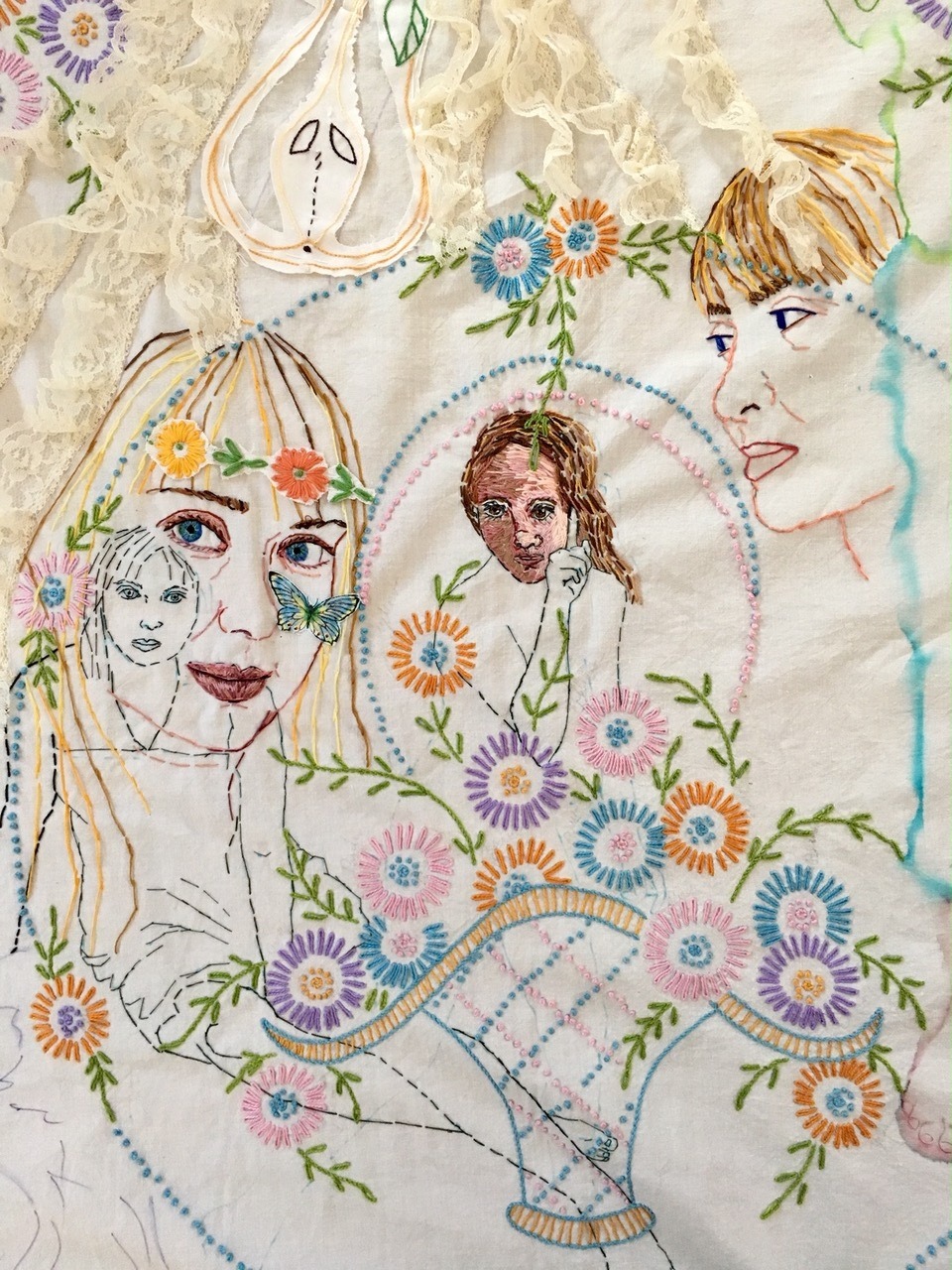
Influenced by mum’s samplers with stitched moral warnings
TextileArtist.org: What initially attracted you to textiles as a medium? How was your imagination captured?
Orly Cogan: As a child, I was fortunate enough to attend a Waldorf School where the arts and music were celebrated and held in the same regard as traditional academics. There, I was introduced to various fibre-based materials from an early age; I learnt to knit, crochet, basket weave and hand-sew. The sense of freedom I felt to explore without fear of getting things wrong meant that I could become comfortable expressing myself visually.
I continued to explore various art materials and techniques as I grew, taking weekend workshops in the city at The Cooper Hewitt Museum.
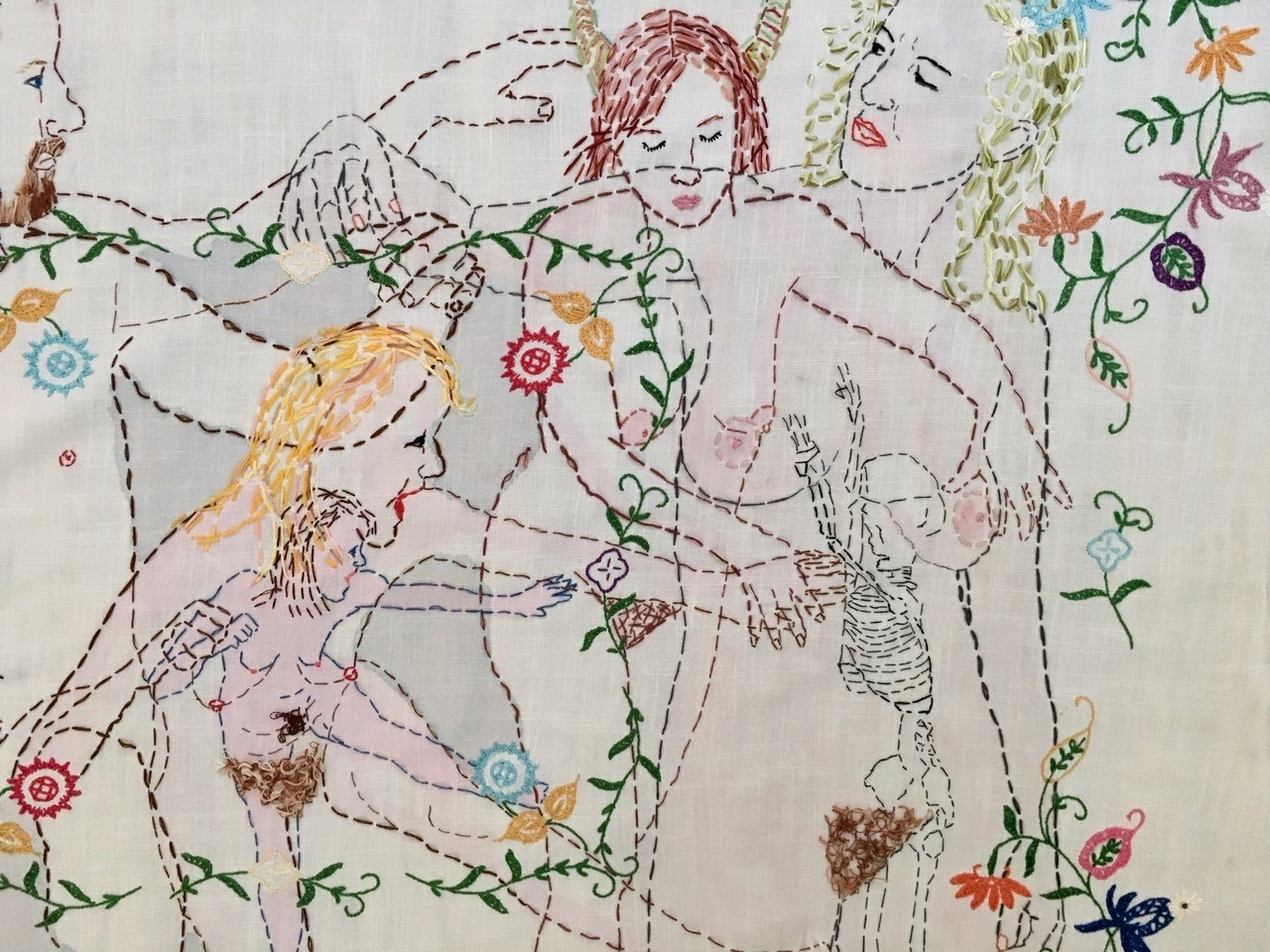
What or who were your early influences and how has your life/upbringing influenced your work?
I suffered with dyslexia back when hardly anyone understood what that word meant. Luckily my parents were progressive and sought out special help in the form of tutoring after school.
Growing up, I felt inadequate in several of my academic subjects, but in art I could shine and grew more confident in my abilities, so that was where I naturally turned my focus. My middle school teacher was also an artist; he gave me extra credit for doing more drawings to accompany my handwriting work.
My home was filled with paintings and sculpture, Persian rugs on the floors and antique quilts on the beds. My parents encouraged travel and took me to museums and the theatre where I thought of it as paintings in motion. My mother collected folk art, particularly embroidery samplers. She was impressed with the technical aspect of the work and amused by the preachiness of many of the stitched moral warnings.
In school I loved looking at paintings that portrayed goddesses and gods, like in Botticelli and Rubens for example. Also, I was so taken with the whimsy and guile and the unexpected scenarios in Bosch’s work. I didn’t learn about contemporary art until college.
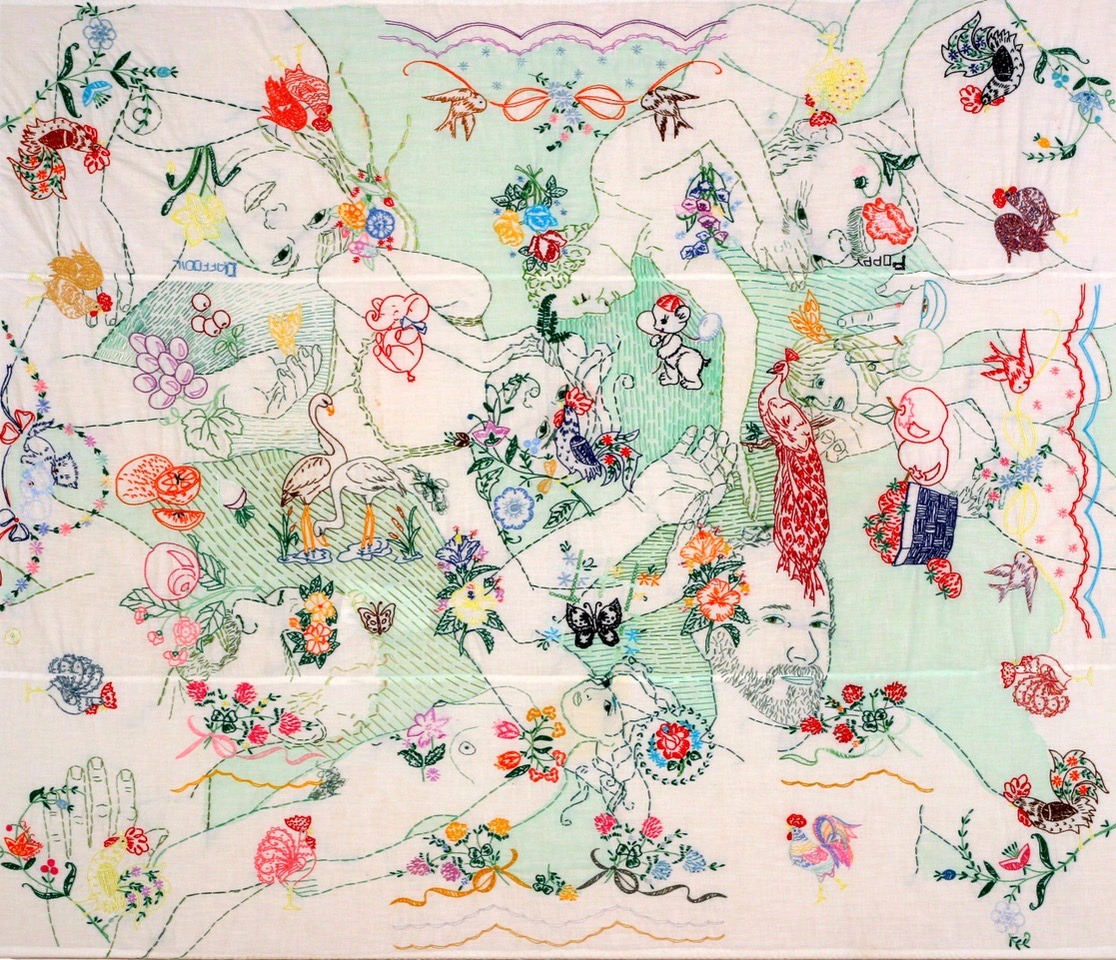
What was your route to becoming an artist?
For me, being an artist was a natural decision; it was simply the subject in school I enjoyed most and from which I received positive feedback.
So after school, I attended two art schools: The Cooper Union for the Advancement of Science and Art in New York City and The Maryland Institute College of Art.
One of the many additional workshops I attended was a one-day traditional quilt square workshop at the Folk Art Museum, New York; I took my mother’s place as she couldn’t attend. Just to amuse myself I stitched between the seams a little nude figure. To me, the American history stitch work had a grannyish, repressed, prudish, spinster quality, and by embroidering nudes I turned that on its head. The senior women in that class were a bit shocked and yet inspired! Sexuality and embroidery rarely intersected at that time.
After that, I started working on small embroideries for myself while still focusing on painting. Whilst nude figures have been drawn since the days of cave paintings and religious art, an embroidered nude seemed a lot more scandalous than a painted nude, so I was excited to explore this further.
I had finished art school and my father let me use a space over his office as a studio. It was in a small suburban town and, after a while, I felt too detached from the city art scene and the energy I derived from that. So I rented a studio in New York City. I mixed with other artists at different stages of their careers, I went to art openings, promoted my own studio visits and thrived in this like-minded community.
I became friendly with an art critic and invited him to come and see my big paintings. At that time I didn’t think of my thread drawings as serious work – I was doing it as a hobby. When he saw some of my small embroidered pieces, he was really inspired and strongly encouraged me to pursue this technique.
After that, I began thinking a lot more about becoming intimately connected with what I was making, and how that connected to my life and what I was most interested in: relationships, dichotomies and my own emotional experience. I became less hesitant about creating more vulnerable work and it developed from small whimsical erotic figures to strong feminist narratives with historical commentary. It was a pivotal moment: in short, I stopped doing what I thought the galleries were looking for and developed my own personal style.
Back then, I knew very few artists working with craft-based materials. In 2000 I had my first solo exhibition and went on to participate in many group shows as my work gained recognition. I’ve been working for some 20 years now within this realm and have curated three group exhibitions of textile/fibre based work in NYC.
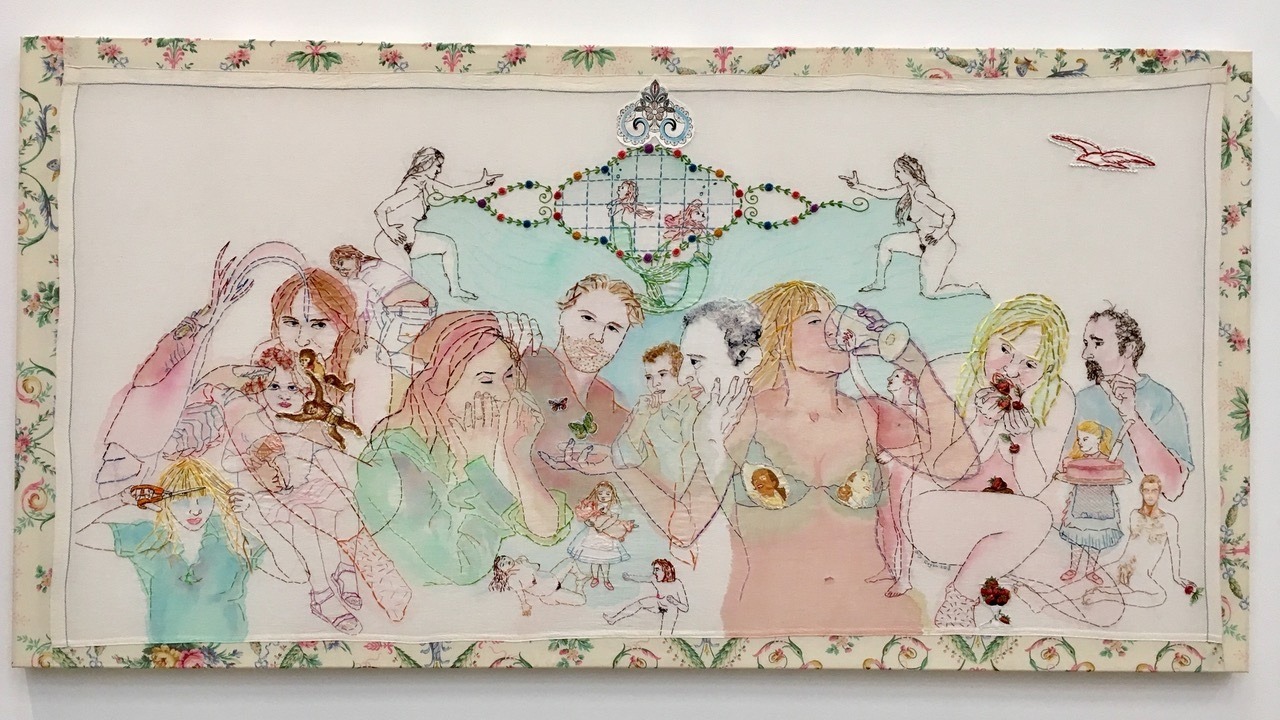
Veiled layers to give movement
Tell us about your process from conception to creation
Over the past 20 years, I’ve accumulated quite a collection of fabrics and vintage pieces. I sort them into bins according to size, print, plain, etc.
I often start out with the existing fabric as my foundation and then build the story from there, but sometimes I have an idea and then go searching for the right materials, pinning together bits and pieces of fabrics, embroideries and appliqué.
If my concept is fully formed, I figure out how to go about translating it into a visual language using symbolism to move the narrative along. In many of my works, characters simultaneously act as subject and object. “The actors are present in the way a child perceives the world — wholehearted, engaged, uninhibited, and reliant on the senses”. In some pieces smaller figures are intertwined among the larger, encircling the protagonist. The age and scale of each figure vary, creating a kind of hierarchy that hints at a state of constant flux between each character’s assertive and passive roles.
Since the stitched line is staccato, I veil paint layers that give movement and a dreamy quality. I hand embroider using a hoop in my lap. Throughout the process, I pin the piece up to the wall to see how it is coming along from a distance and then, many times, I will go back into it. Since my background is in painting, this was my process for when I would do detailed work – close-up painting and then stepping back and away from the piece for a while before taking the next step.
In the process, I aim to provoke certain questions: What role do women want to play in society today? Who do we want to be? What kind of relationships do we want to have? Who are our role models? What are we teaching our children?
Sometimes I work on multiple pieces in the same time period; other times I am driven to focusing on one at a time. Either way, it is a time-consuming process with many steps.
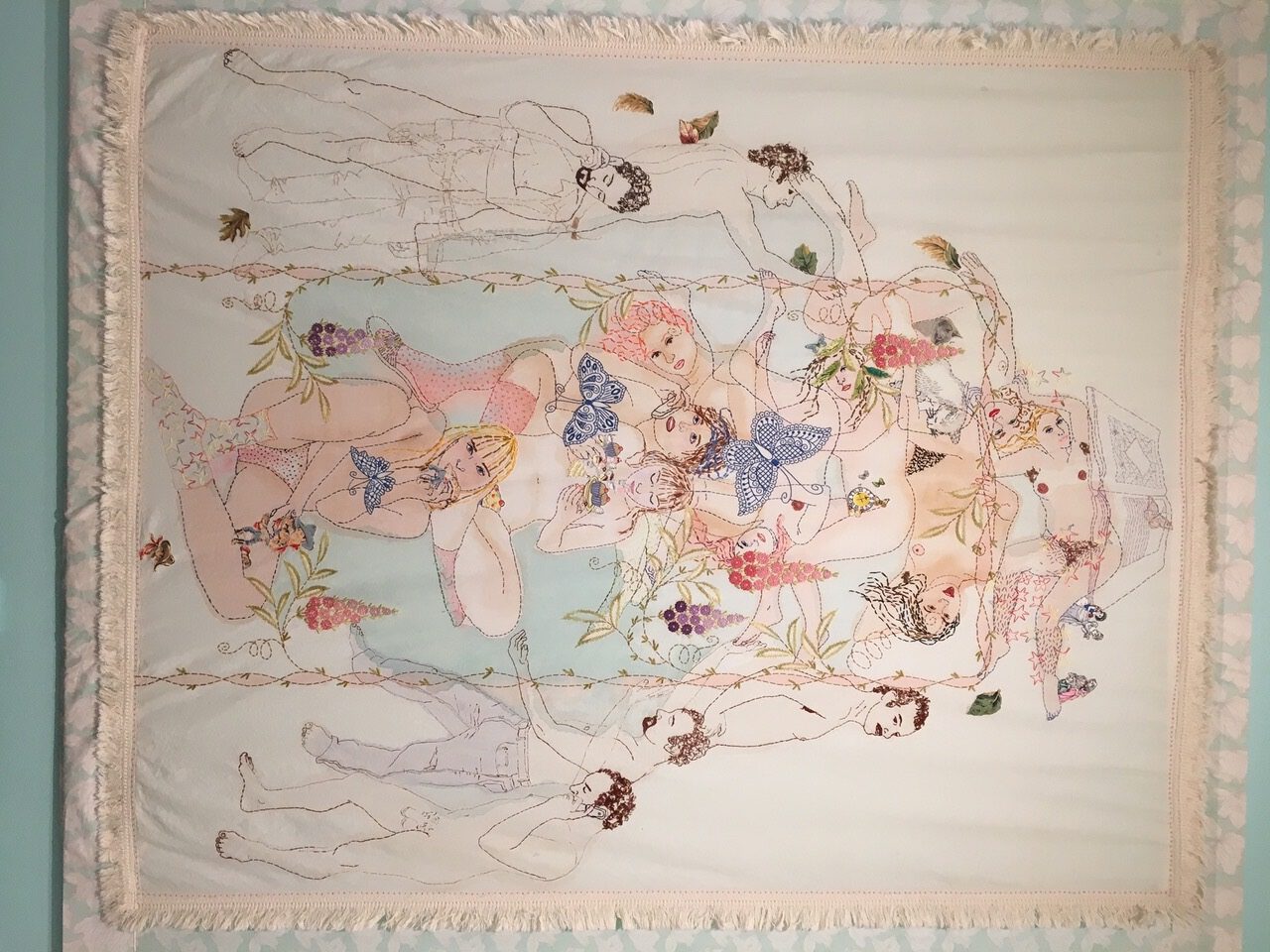
Tell us a bit about your chosen techniques and how you use them
I haven’t actually learned any particular stitch work techniques. I like to figure it out as I go and see using thread just like I would any other art material; I work intuitively. I love mixing various sensibilities within the work – like loose stitches that feel more like a sketch drawing or thick dense areas of threads that become more sculptural, to fine thin layering of the simple running stitch that creates perspective and gives the feeling of familiarity and naiveté. I use crochet and appliqué and paint to bring out more movement within the staccato line work in some pieces.
I have been expanding from two dimension pieces to installations where I combine various materials such as buttons, cut out fabrics, vintage craft objects and threads wrapped between sewing pins into the wall creating shadows with the lines. A complex webbing which to me is symbolic of connections and disconnections between the character’s various emotional states and the fragility of life. These works are ethereal and light yet the message is powerful but with just a tug the whole scene can become unravelled (a metaphor for life!).
Sometimes it’s a clear story or emotion I want to express other times it develops by playing off the original vintage motifs like a flower basket which could double as a bonnet for one of my figures.
I build on the history of our foremothers’ “woman’s work” by using traditional materials that they used to decorate or “feminize” the home. I attempt to honour their labours as I add my perspective to demand the attention that a large contemporary painting would command.
The personal tableaux I depict across sheets and quilts illustrate different elements of the female identity and condition through my eyes as an American Woman. They ask questions about relationships, sources of emotional sustenance and feminine archetypes. This juxtaposition of vintage and contemporary feminism is a rich contrast that gives the work a unique energy.
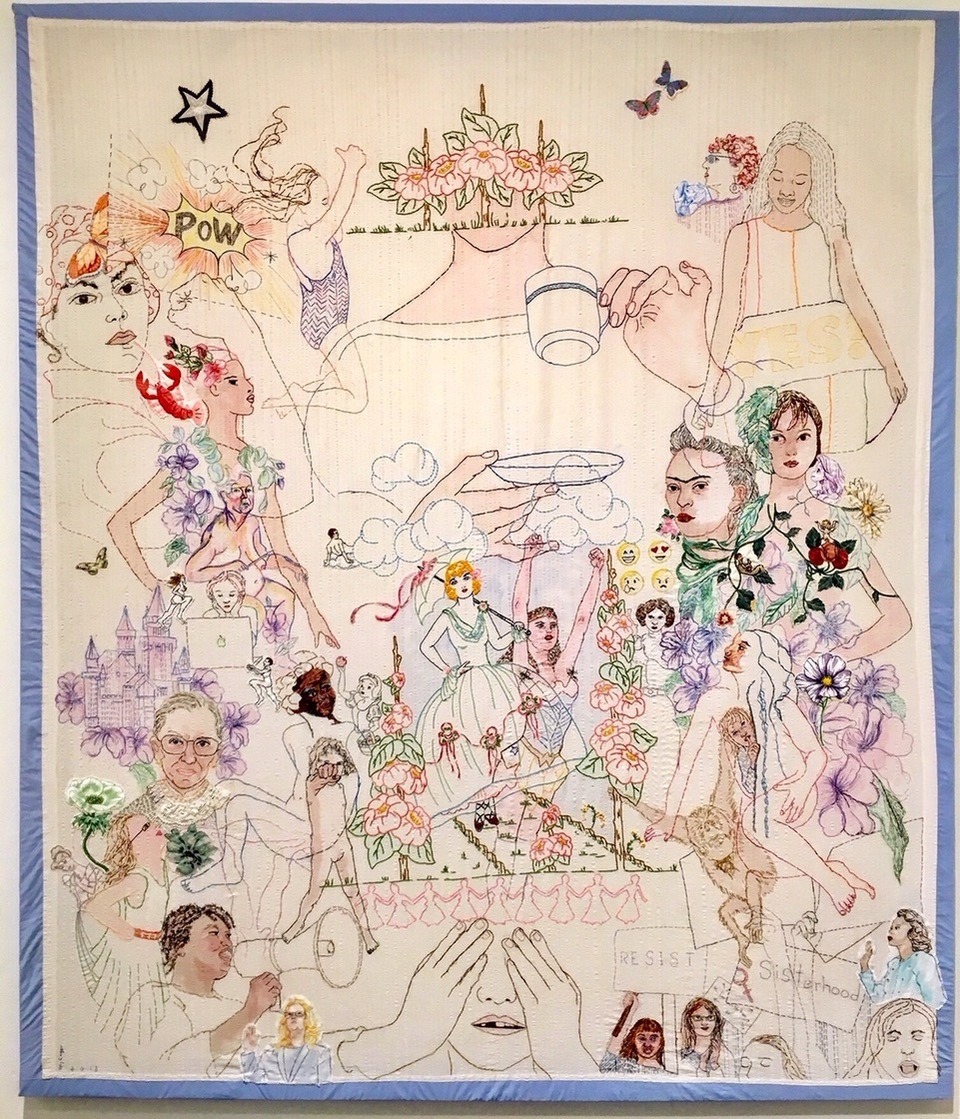
What currently inspires you?
What inspires me right now is politics. Most of my work has dealt with woman’s issues on one level or another, but these days, with the political climate in the US being as it is, the issues weigh particularly heavy on my mind.
In my studio, I listen to public radio much of the time which keeps me current. I gain inspiration from the culture around me. I love to walk around the city and just take in the sights and sounds. I get inspiration from poking around stores and taking in trends, art history books, seeing the world through my daughter’s eyes, interpersonal dynamics in general and the news.
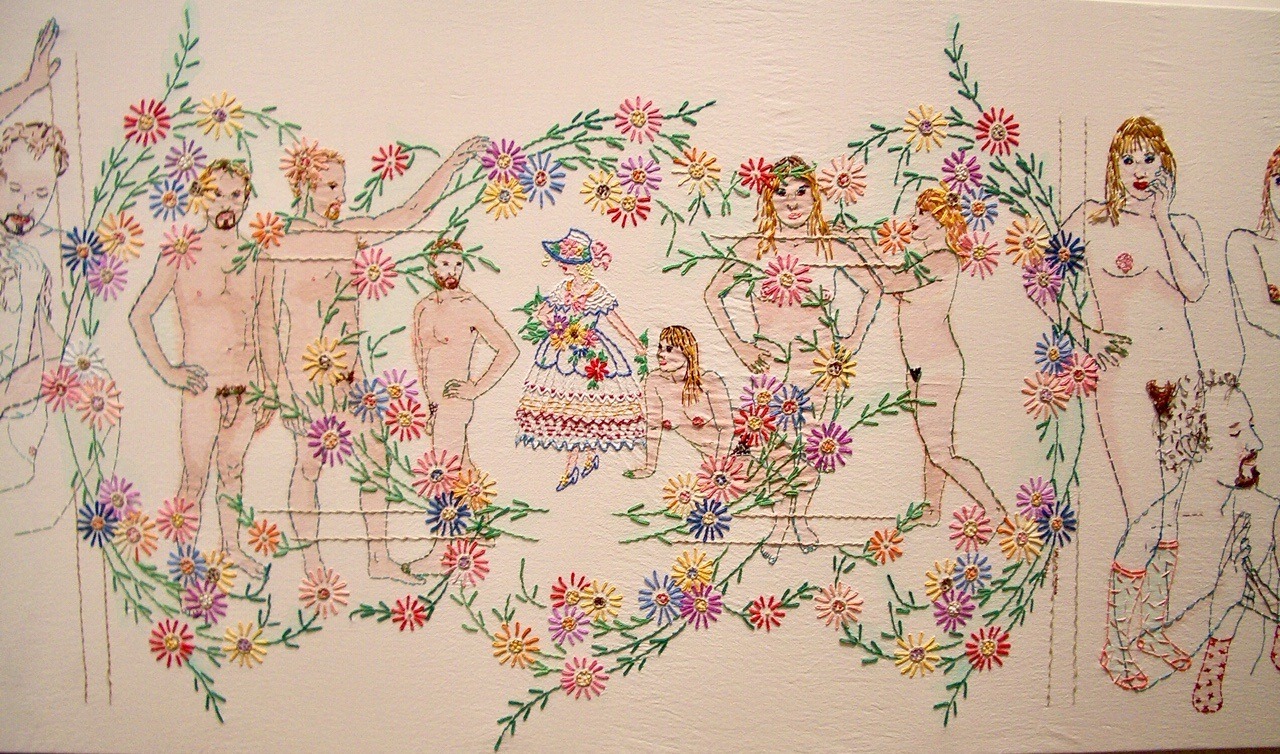
Keep on working through blocks
Tell us about a piece of your work that holds particularly fond memories and why?
They are all a bit magical for me. Each piece I create has memories associated with it. From where I first find the base fabric to the commitment of imagery I draw and then labour over, to whose portrait may be featured. I find myself longing to know who has pieces I have sold and where they are hanging now.
If I had to choose one particular sentimental piece, it would be the one that hangs over my bed. I made it the year I got engaged and it portrays various moods and stages of love between my now husband and me at that point in time. In the centre, I snuck in our initials on the hat of Mother Nature, who brings us together with hearts growing out of vines and lots of flower garlands all around. It’s a romantic piece that evokes various emotions of pushing away and coming together.
I think of it as my love piece that marked that moment in time just a year before I married where I couldn’t bear not seeing him during the day while at work. So it gave me comfort to embroider his likeness over and over, intertwining with mine, coming from different places in life but ultimately finding one another.
I hope each piece comes across as both thought-provoking and inspiring.
Recently I’ve been including my daughter’s likeness in a couple pieces and perhaps those are the most sentimental for me. I know this sounds a bit sappy but what can I say, I’m a romantic at heart!
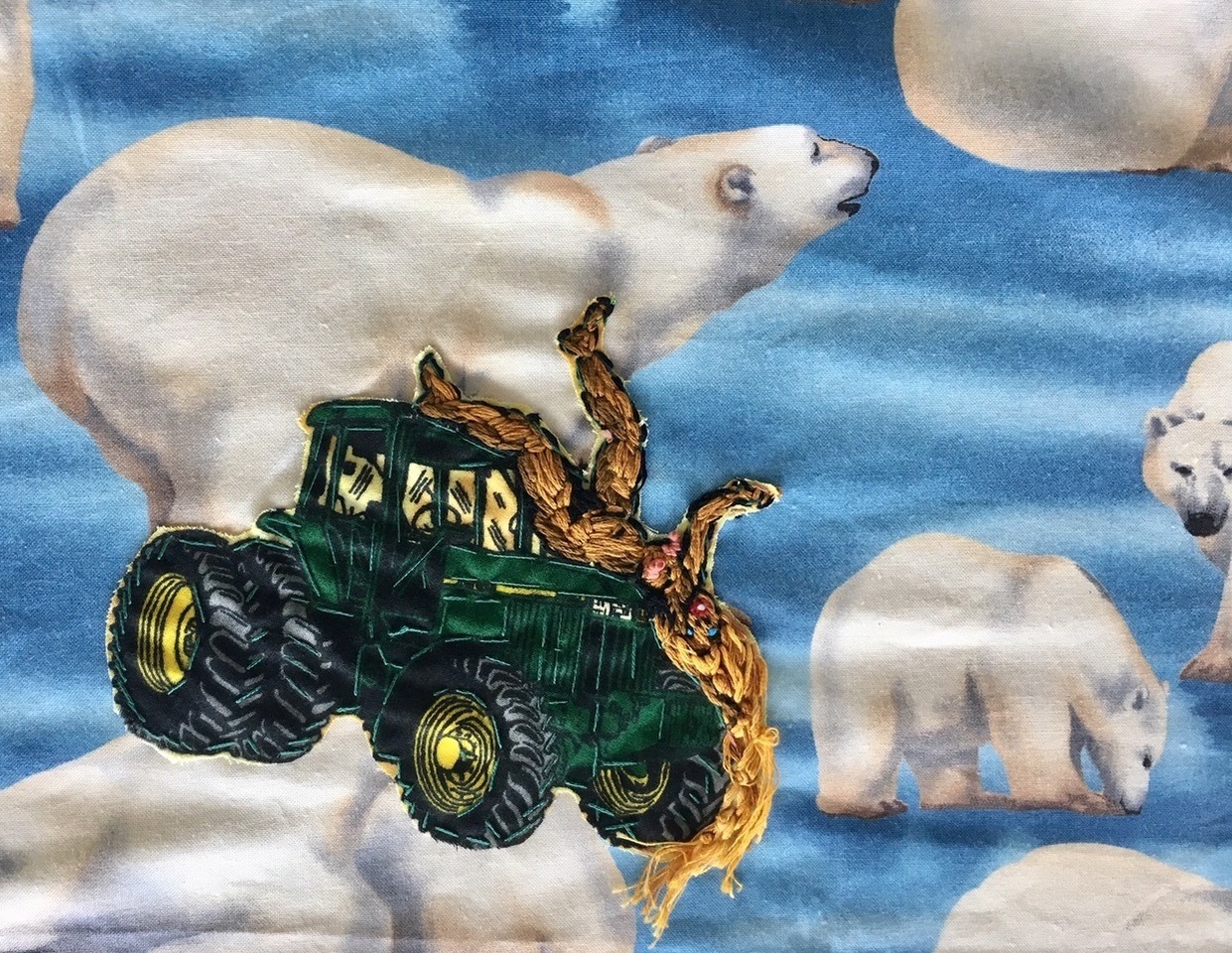
How has your work developed since you began and how do you see it evolving in the future?
When I first started using embroidery in my work, the figures were small with thick thread densely stitched in, often playing off printed fabrics. The pieces were infused with childhood mischief, with a nod to the ridiculous as many of the circus-like miniatures frolicked uninhibited in absurd open-air environments. I reached beyond the limits of typical erotic behaviour and pushed it into unexpected directions in a kind of Bacchanalian celebration. Often the thick threads and loose stitches were raw and unrefined in contrast to the printed fabrics they embellished.
As I continued to develop, my figures became larger, less about sexual conquest and more about emotional content. The figures were layered with streamline thread drawings overlapping one another, implying varied emotions with efficient line work.
I incorporated more portrait-like details as my work grew more semi-autobiographical, dealing with issues of fertility, power play, relationships, rejection, longing, obsession, intimacy and finding beauty in the mundane. Many of my characters live in limbo between public and private, much like today’s brand of culture — confessionalism with yesteryears’ kitschy conservatism.
The current exhibition I have on view now at The Brattleboro Museum and Art Center in Vermont is titled “Don’t Call Me Princess” and it speaks of how the narrative of fairytales play a role in the American contemporary mindset. This exhibition will be on until the 2nd of March 2019.
Feminist issues have always been sprinkled throughout my work but with the use of vintage linens that had embroidery aspects from yesteryear, it brought me to a natural progression of continuing that conversation between women of then and now. My work has become a bit less personal and more political recently.
Currently, I am working on introducing a more abstract textural aspect to the work where the storyline is more ambiguous and where some elements go off the picture plane. I’m also continuing to work on mixed media installation.
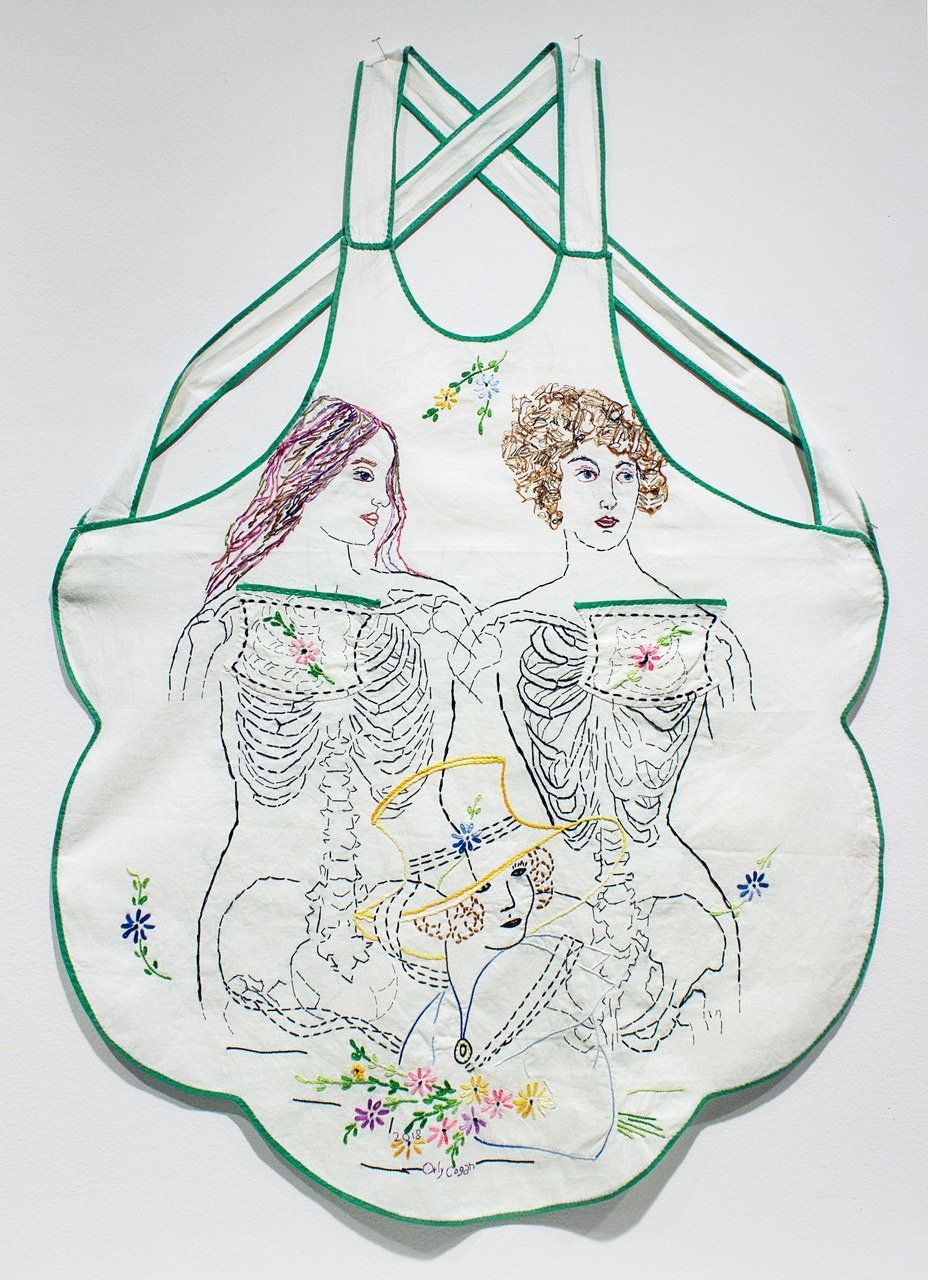
What advice would you give to an aspiring textile artist?
I think it’s important that your work means something real to you and that you try to convey what you’re saying visually in a different way than what you’ve seen before, if possible. It has to be authentic to who you are and not just be following a trend.
I think everyone goes through blocks and if you can just keep working, you will eventually pull out of it. I find even on days when I don’t seem to be getting much done if I’m physically in the studio my creative brain will take over intuitively.
For more information visit orlycogan.com
Politics and feminist issues inspire Orly. Let us know what inspires your work in the comments section below
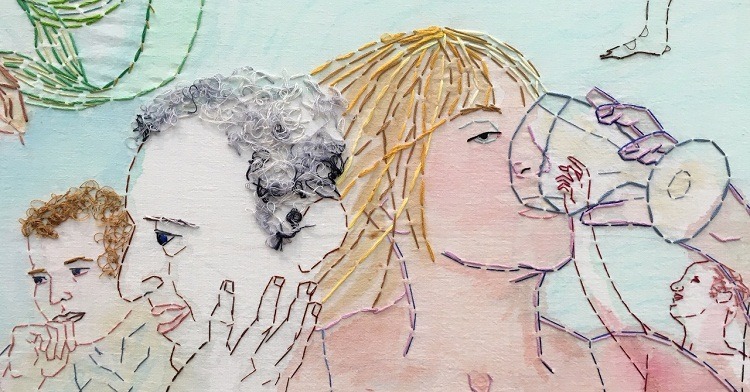

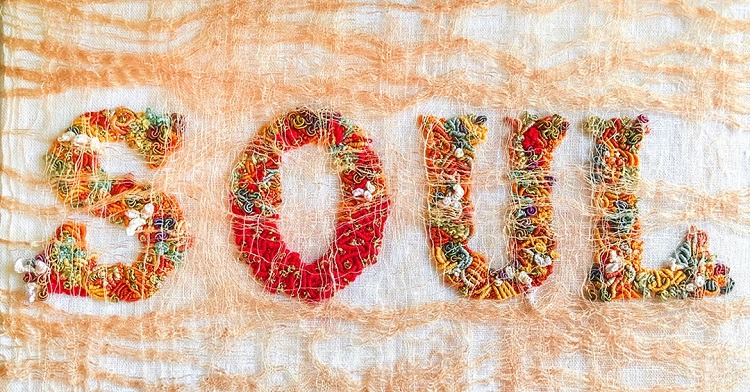
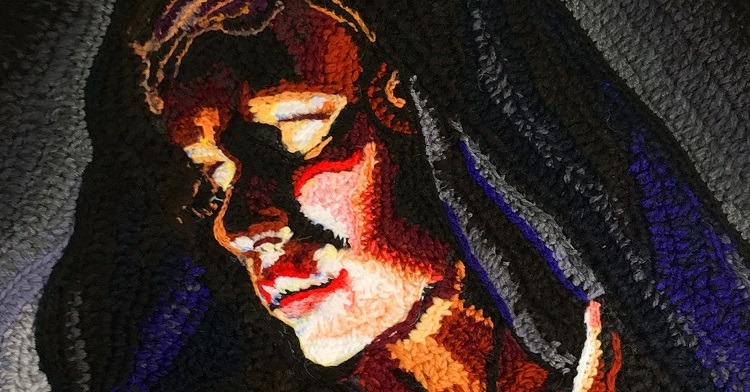
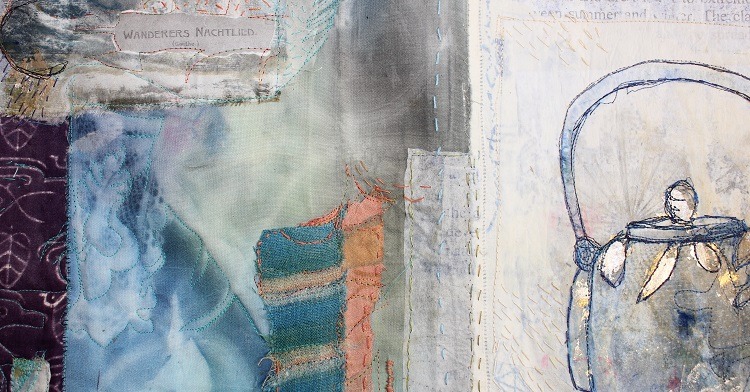
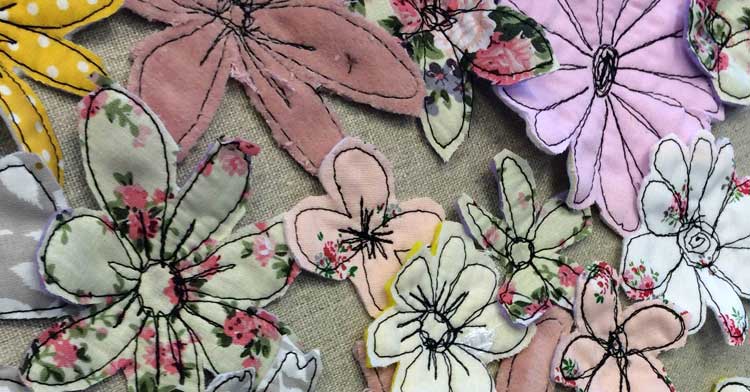
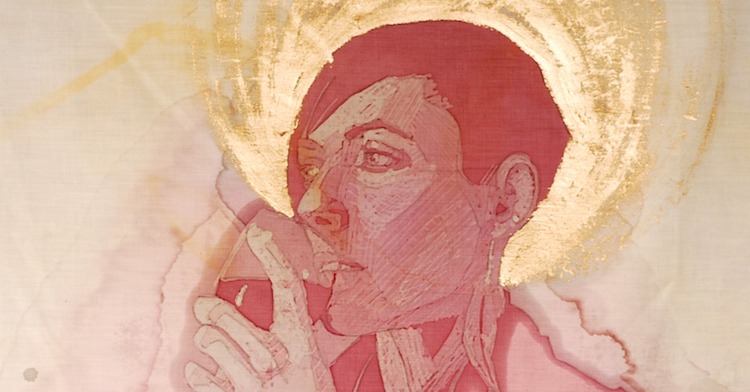
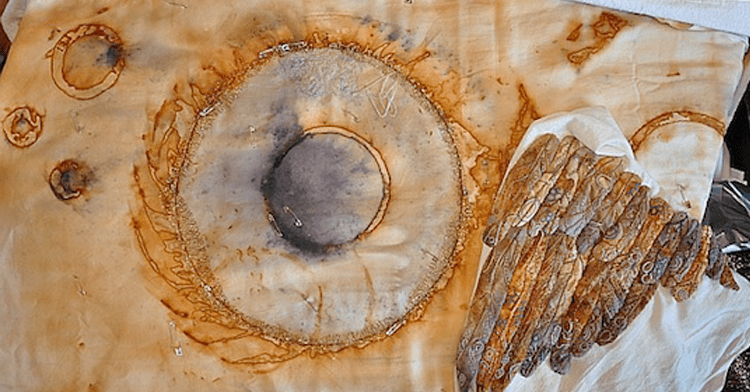
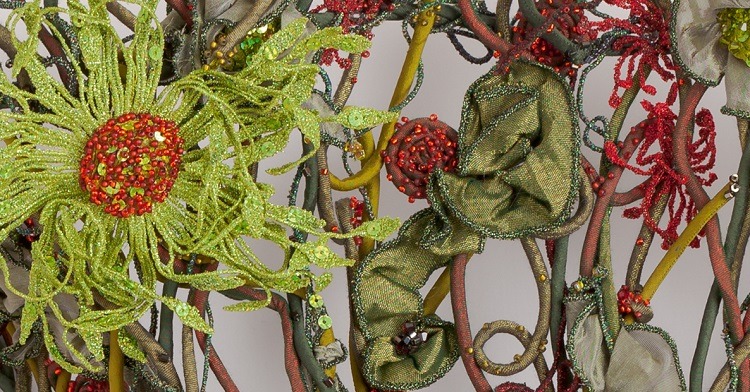
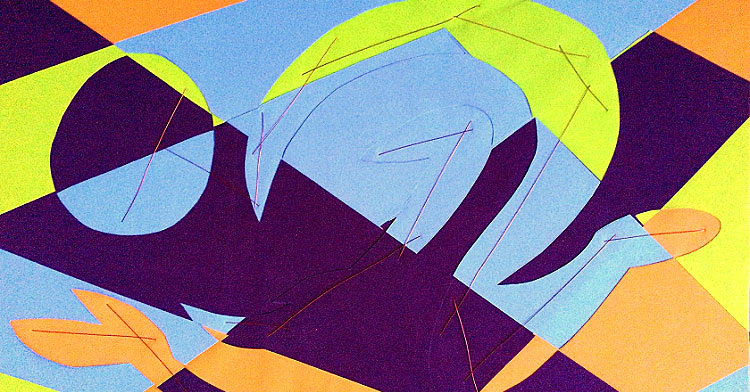
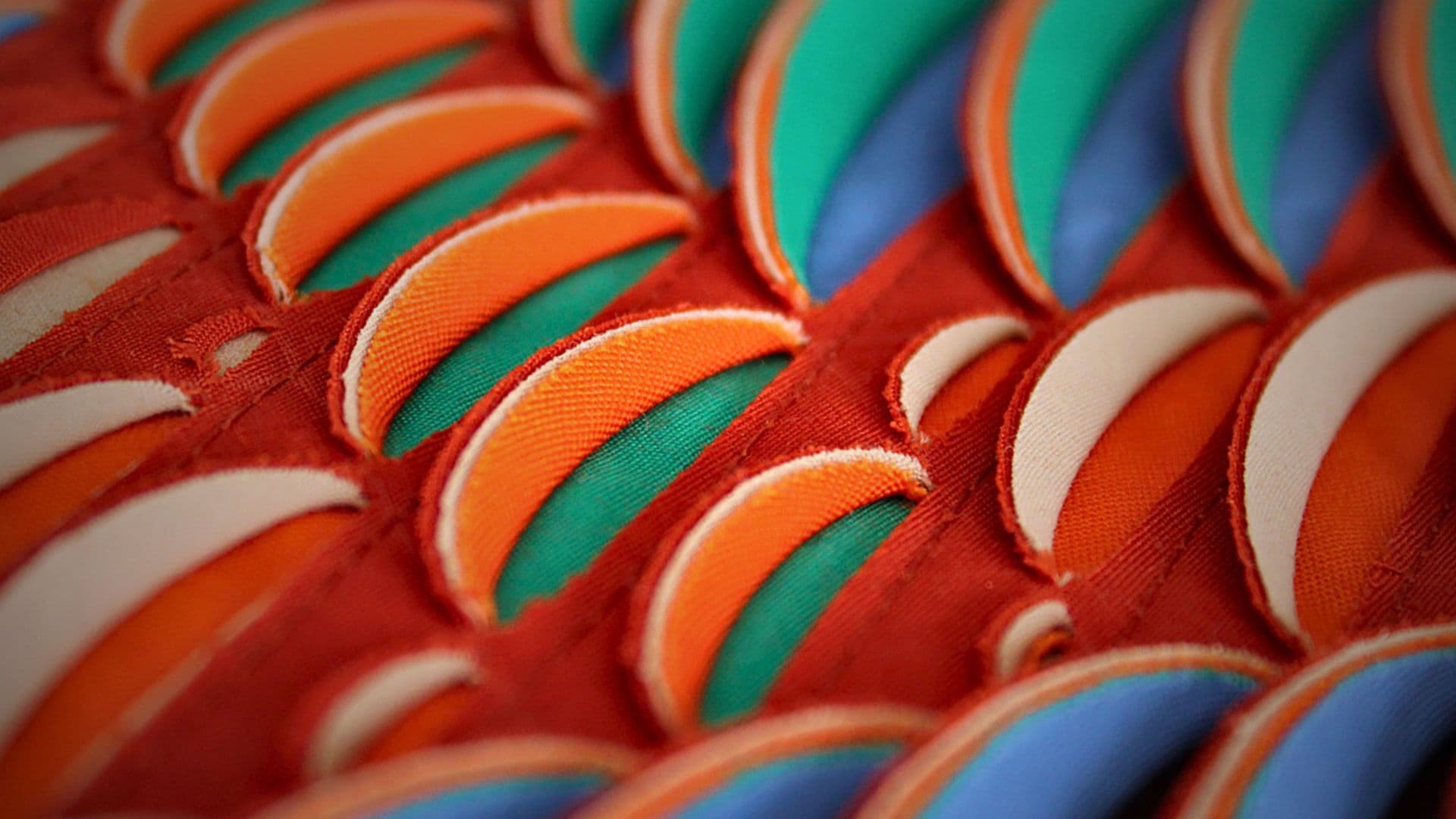
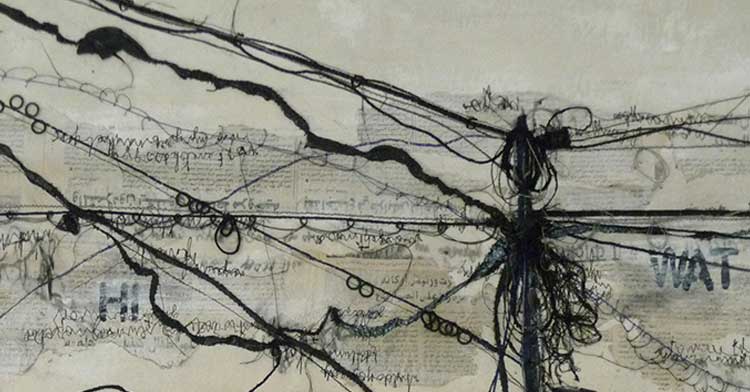
8 comments
Patricia Lazar
I have been totally WOWED by Orly’s work! Dazzled, enlightened, and inspired. Thank you so much for sharing her work here,
Patricia
Anne
Inspirational. Thank you.
Tara Dixon
What a wonderful article and interview. I have know Orly for over twenty years and learned so much! I simply adore my inspiring, talented, unique, authentic, magical and big~hearted friend. Thank you for celebrating her and her important work in the world!
Judy
I have just read your new Orly Cogan interview with her inspiring works. Thank you so much for valuable sharing. Judy
Yael Sverdlik Markowicz
I find Orly’s work to be inspiring and motivating! I’m excited to see art that portrays women in a real raw way! I love your work!
Els Boersma
I was very touched by the work of Orly Cogan. Especially the use of vintage “womenswork’ My mother just passed away and I found lots of mended clothes. This interview convinced my idea of using these clothes in my work.
Ana Windham
I really enjoyed this newsletter. It was amazing the use of vintage with current application to express oneself and/or the impact of current events/feelings.
It was both inspirational and encouraging to pursue ones emotions and reflect them in ones work.
Helen Scalway
Great to see an interview with such an interesting textile artist.